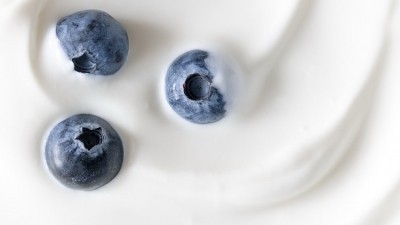Promotional Features
Sugar rush: Delivering the demand for healthier dairy
Sugar reduction is high on world agendas and the number one focus for new product development.
After the world turned its attention to immune health during the COVID-19 pandemic, governments and food and beverage (F&B) manufacturers are now refocusing on sugar.1
Why? An excessive amount of added sugar in the human diet has been associated with the component diseases (diabetes, high blood pressure and obesity) of metabolic syndrome.2 In the US the cost burden of such diseases is estimated at $3.2 trillion, 75% of the country’s annual health care budget.3 Reducing added sugars in diets by 20% has the potential to lower annual direct medical costs for US adults by more than $10 billion by the year 2035.4
The figures may shock but the US is not alone. Governments in over 50 countries are tackling health costs by rolling out targets and taxes to control the intake of sugar.5 And key players in the dairy industry around the world are responding with low and no sugar reformulations.
There is consumer appetite for products that are lower in calories and sugar, too. According to a 2021 survey by the International Food Information Council (IFIC), 72% of consumers are trying to reduce or cut out sugar entirely, with 32% defining healthy food as ‘low in sugar’.6
Since 2017 almost 70% of F&B companies in the dairy industry worldwide have reduced sugar in product lines across categories including confectionary, ice cream and bakery.7 This has led to a 10% reduction in total sugar content in food and drink in the last three years.7
The tightening targets for sugar reduction and rising consumer demand for no- and low-sugar products indicate there is still room for growth. And this presents huge opportunities for dairy companies to strengthen health claims and reap the benefits.
But reducing sugar can have a big impact on taste, an area where consumers refuse to compromise. In Europe, for example, 33% of German consumers believe sweet products need to contain sugar in order to taste good.8 Meanwhile 41% of UK consumers are more likely to be pushed into eating unhealthy food or drink to “cheer themselves up”.9
Indeed, the emotional experience that consumers have around sugar is a complex one. “From a very early age, we develop perceptions and expectations about sugar,” says Midey Gonzalez, Regional Innovation Director, RE-IMAGINE WELLNESS™ at IFF.
“We consume sugar for energy, but it also brings us comfort and happiness. Sugar is often the ‘magic' ingredient because of its taste and functionalities. It's not as simple as replacing it with another ingredient.”
It’s a conundrum faced by all F&B sectors, not least the dairy industry. A recent IFF study assessed consumer attitudes in France, UK, Germany and Spain towards sugar in yogurt. In all countries, 65-82% of consumers said products with reduced or no sugar are healthier, can help save or reduce calorie intake and are better for the teeth. Meanwhile 61-73% of consumers in the UK, Germany and Spain believed that the sweetness in yogurt should come only from the ingredients (fruit and fruit sugar).
Yet the desire to reduce sugar coexists with a reluctance to compromise on taste. IFF’s study found 29-42% of consumers in all countries believed that products with reduced or no sugar result in a “bland taste”, while 51-72% of those consumers believed that these products would taste more “natural and authentic”.
Challenges around sugar reduction
Reducing or eliminating sugar without impacting a product’s sensorial qualities is complex because of the roles sugar plays beyond sweetening. Sugar impacts body and mouthfeel and enhances the flavor of other ingredients. Simply replacing sugar with other ingredients, such as sweeteners, can introduce undesired flavors such as a bitterness or off-notes. Successful sugar reduction requires technical modulation to enhance taste and build back structure, texture and performance.
“In dairy, depending on the application, a reduced sugar content can mean a more watery texture that lacks viscosity or creaminess,” says Marianne Toftdal, Business Product Line Leader, Fresh Dairy Enzymes at IFF.
“Take ice cream, for example. Here, sugar is used not only for sweetness and as a bulking agent, but also to depress freezing point and scoopability. When the composition of an ice cream changes, you won't get the same texture or mouthfeel which is important for an indulgent eating experience.”
In a dessert, for example, the taste, texture and appearance are affected by the sugar content, too. “Removing sugar requires complex, technical adjustments to other components to rebalance attributes such as acidity and color,” says Toftdal.
“The color palate has a big impact on our perception of taste, too, and reducing sugar affects the color of the finished product. A strawberry ice cream that is green instead of pink won't taste like strawberry.”
How can dairy manufacturers optimize the sensorial experience that is synonymous with sugar, with low and no sugar formulations?
Sugar reduction success
Manufacturers increasingly favor a comprehensive and holistic approach to sugar reduction as a way to reformulate without sacrificing the sensorial experience.
“Flavor modulation is a holistic way of working. It taps into insights around consumer preferences and functionality,” says Gonzalez. “When sweeteners are added, for example, we modulate to mask the effects of intensive sweetness, such as off-notes and bitterness.”
“Manufacturers work with us because we understand that every application is unique. We have the ingredients, technology and expertise to compensate for a lower sugar content and deliver a combination of ingredients which resonates with the consumer as much as the traditional ones.”
Enzyme technology is one step toward successful sugar reduction. Lactase enzyme, BONLACTA™ converts the lactose found in milk into the simpler sugar forms: glucose and galactose. Galactose and glucose taste sweeter than lactose. As a result, BONLACTA™ mediated lactose-free milk tastes sweeter because these sweeter sugars have replaced the lactose. NURICA™, another innovative enzyme from IFF, takes sugar reduction one step further. NURICA™ enables manufacturers to naturally produce dietary fibers in the form of GalactoOligoSaccharides (GOS) by transforming lactose that is present in dairy products. For both BONLACTA™ and NURICA™, the result is a lactose-free product that is easy to digest while reducing added sugar in the final product.
The YO-MIX® PRIME range of cultures employs patented technology to provide full control of acidity and ultimate mildness in yogurt. By controlling the acidity, the perception of sweetness can be increased by up to 23%. This reduces the need to add sugar to formulations, meaning consumers can enjoy the same sweet tastes they’re familiar with, and less concern about sugar intake.
To optimize visual appearance in reduced sugar products, IFF Natural Colors BRIGHT’N PURE and Clean Label Colors BRIGHT’N FREE are designed to align product appearance, such as color, to tasting expectations. This can work in tandem with IFF FLAVORFIT™ natural flavor modulators which work to maintain the same or very close sweetness intensity and profile as standard product without off-notes.
For ice cream and frozen dessert formulations, customers can leverage a wide range of bulking and freezing point depression agents, such as LITESSE® polydextrose and stabilizer systems from the CREMODAN® range which help maintain the same melting down profile and creaminess in reduced or zero sugar products.
The plant-based fresh fermented segment requires expertise to achieve a sugar reduction as well as successful fermentation, with premium texture and taste. “Plant-based proteins have a different composition of carbohydrates to milk proteins, so it is important to use a very specific culture like DANISCO® VEGE plant-based cultures,” explains Toftdal.
“In plant-based dairy, the selection of the enzymes and the type of culture is essential. Our job is to help our customers make the right selection that will work with the composition of that base, because each one is different,” says Toftdal.
By combining consumer insights, at local and global levels, underpinned by sensory expertise and state-of-the-art tools and infrastructure, IFF can help deliver end-to-end product innovation, from concept to consumer.
“In light of consumer awareness and government mandates, we are committed to leveraging our extensive portfolio of cultures, dairy enzymes, flavors, colors and stabilizing systems to optimize sweetness and nutritional profiles, and help our customers meet targets as they evolve,” says Gonzalez.
Driven by a dedication to craft extraordinary consumer experiences, IFF is committed to empowering its customers towards success in the market. By exceeding consumers’ expectations in the reduced sugar arena, manufacturers can help shape a healthier future within dairy and beyond.
References
1. Mintel. 2023.
2. Rippe, J.M.; & Angelopoulos, T.J. (2016). Relationship between Added Sugars Consumption and Chronic Disease Risk Factors: Current Understanding. Nutrients, 8(11), 697.
3. Vreman R.A.; Goodell A.J.; Rodriguez L.A.; et al. Health and economic benefits of reducing sugar intake in the USA, including effects via non-alcoholic fatty liver disease: a microsimulation model. BMJ Open. 2017 Aug 3;7(8):e013543.
4. Obesity Evidence Hub Countries that have taxes on sugar-sweetened beverages (SSBs) (updated March 2022).
5. IFIC 2022 Food and Health Survey.
6. Office for Health Improvement & Disparities, Sugar reduction – industry progress 2015 to 2020. Including the final report for foods included in the programme and the latest data for drinks included in the Soft Drinks Industry Levy and juices and milk-based drinks. December 2022, London, HM Government.
7. Base: 1,000 internet users aged 16+ Source: Lightspeed/Mintel.
8. Base: 2,000 internet users aged 16+Source: Lightspeed/Mintel.






